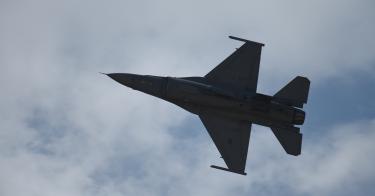Peace is a wonderful thing. After the dissolution of the Warsaw Pact in 1991, the United States and other NATO members slashed defense funding and spent the money on social programs. As a result, real military capability plummeted across the alliance.
In 1987, the U.S. had 29 fighter squadrons based in Western Europe alone. Today, it has just six based in Europe and only 32 active-duty fighter squadrons in total.
NATO allies have downsized as well. Germany is down to five operational Eurofighter squadrons and three operational squadrons of dated Tornado fighter-bombers. And “operational” is not synonymous with “mission capable.”
On any given day, just four of every 10 Tornados are ready to fly a combat mission. While low, that mission-capable rate looks stellar when compared with their front-line Eurofighter. Last year, just four of Germany’s entire fleet of 128 Eurofighters were combat ready. Since then, the German government has classified the readiness of its weapons for security reasons — most likely to avoid further embarrassment.
While Western capabilities have shrunk, the threat from Russia has grown considerably over the past 15 years. Its military incursions into Georgia in 2008, as well as the Crimean Peninsula and Ukraine in 2014, have positioned it well for naval and air operations in the Black Sea and eastern Mediterranean. It has fortified its position in Syria, sought to bolster its presence in both Egypt and Libya, and its activity in the eastern Mediterranean is cause for real concern. Collectively, Russia has embarked on a campaign to foment instability in Europe.
NATO military leadership in Mons, Belgium, has countered those moves by establishing air policing and air surveillance missions over the Baltics, Montenegro, Iceland and the Black Sea region. The collective weight of those missions would have been easily shouldered at the height of the Cold War. However, after years of force-size reductions and shrinking military budgets, the demand of just these four air missions is testing the capacity and capability of the NATO air forces that exist today.
In an effort to stop the slide in readiness and check Russian aggression, President Trump has encouraged NATO member nations to meet their commitment to spend 2% of their gross domestic product on defense — a commitment agreed on at NATO’s 2014 summit in Wales. While several nations have moved on that goal, the pledges of France, Denmark, Italy and Germany have turned out to be little more than hollow rhetoric.
On the other hand, many of NATO’s newest member states, like Croatia, are clear-eyed about the threat from Russia and earnestly desire to boost their defense spending.
Croatia’s quest to expand its role within NATO, coupled with its strategic location, make it a near-ideal player in Europe’s air defense structure. Its fighter force is small, but its organization is solid. The only thing holding it back is its store of dated operational systems, like its third-generation MiG-21 fighter, which is technically obsolete and hard to maintain.
Croatia has been looking for a deal on a fourth-generation fighter like the F-16 that would allow it to strengthen its own security and to expand its contributions to NATO. For that reason alone, the Trump administration should step in and facilitate its acquisition of a squadron of fourth-generation fighter aircraft. Making that happen now will elevate the overall combat capability of the alliance and give the U.S. more leverage to push Germany, France, Italy and other NATO members to meet their defense spending commitments and start rebuilding NATO’s military power.
The Trump administration should direct the Pentagon to actively pursue and offer viable fighter alternatives for Croatia. Once the former Yugoslav republic makes its pick, the Defense Department should help train Croatian pilots and technicians on the new weapons system. This cooperative approach will strengthen the alliance and the prospects for continued peace in Europe.
This piece originally appeared in The Washington Times



